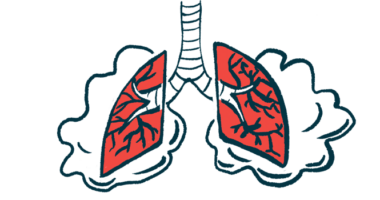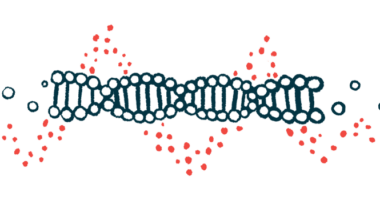Five genes linked to lung scarring, high blood pressure in SSc: Study
Researchers say they could serve as biomarkers, preventive strategy targets

Researchers in China have identified five genes — COL1A2, COL3A1, COL15A1, THY-1, and CCL19 — that may play a key role in lung complications associated with systemic sclerosis (SSc), according to a study.
Using bioinformatics analyses of patient tissue samples, the team found that these genes were consistently overactive and linked to processes such as cell migration, biological adhesion, and collagen biosynthesis, which contribute to tissue scarring and increased blood pressure in the lungs.
Researchers suggest that these genes could serve as potential markers for early diagnosis and as targets for preventive or therapeutic strategies against SSc-associated lung disease.
The study, “Identification and validation of key genes commonly expressed and upregulated in systemic sclerosis-associated lung diseases through integrated analysis,” was published in Biochemical and Biophysical Research Communications.
Excessive collagen production causes lung scarring
In SSc, the body’s immune system mistakenly attacks its own tissues, leading to the formation of fibrotic tissue. When this occurs in the lungs, it can manifest as interstitial lung disease, where the lung tissue becomes stiff, or as pulmonary hypertension or pulmonary arterial hypertension, where the blood pressure in the lungs becomes abnormally high.
In this study, the researchers investigated how genes and biological pathways may contribute to these lung complications. Genes provide the instructions for making proteins that guide how cells function, while biological pathways are networks of interacting molecules and signals that regulate specific processes in the body.
The researchers used large genetic databases, specifically the Gene Expression Omnibus, to compare the activity of genes across patient groups with different systemic sclerosis-associated lung diseases, including SSc-interstitial lung disease, pulmonary fibrosis, and pulmonary arterial hypertension.
By analyzing these data, they identified certain genes that were more active in people with SSc than in healthy controls.
Twelve “hub genes,” which are central players in the disease process, were identified. Out of these, five genes were deemed especially important: COL1A2, COL3A1, COL15A1, THY-1, and CCL19. These were consistently found to be overactive and were confirmed in mouse models with lung scarring.
The findings of this study serve to enhance the existing body of knowledge surrounding the [disease-causing mechanisms] of SSc-associated lung diseases. In addition, they may facilitate the identification of early warning biomarkers and potential therapeutic targets for SSc patients with lung complications.
Three main processes appeared most strongly linked with the disease and these genes: biological adhesion, cell migration, and collagen production. Biological adhesion refers to how cells stick to each other or to their surroundings, which can affect tissue structure. Abnormal cell migration can lead to tissue damage, while excessive collagen production causes scarring in the lungs and blood vessels.
Each of the five genes plays a role in these processes. For example, COL1A2, COL3A1, and COL15A1 are all collagen-related genes. When they are overactive, they may drive the buildup of scar tissue. THY-1 is involved in how cells communicate and move, while CCL19 is a signaling gene that may attract immune cells to the lungs, worsening inflammation.
According to the researchers, understanding which genes are most involved in lung damage could help doctors detect disease earlier. If these genes can be targeted with drugs, it may also open new treatment options to slow or stop lung scarring.
“The findings of this study serve to enhance the existing body of knowledge surrounding the [disease-causing mechanisms] of SSc-associated lung diseases. In addition, they may facilitate the identification of early warning biomarkers and potential therapeutic targets for SSc patients with lung complications,” the researchers concluded.







